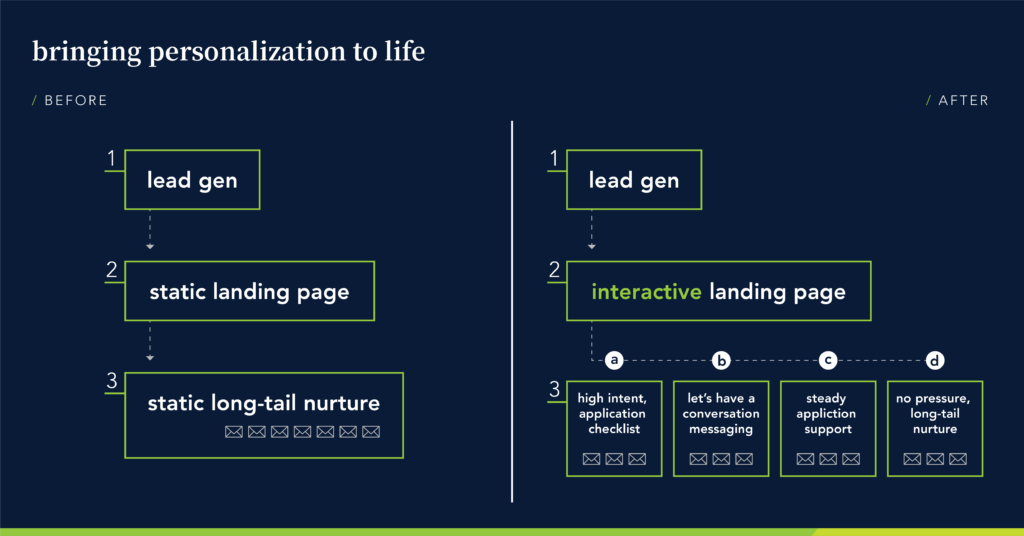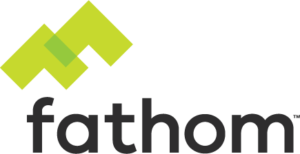Depending on which survey you look at, upwards of 94% of marketers, regardless of industry, believe personalization is important and praise its ability to advance customer relationships. On the other hand, just about 60% are comfortable stating that personalization has helped them achieve a superior customer experience.
With 81% of consumers wanting brands to understand them well enough to know when and when not to reach out, why aren’t marketers closing the gap? From my experience, personalization at scale can seem like an overwhelming endeavor for marketing leaders. That’s why I often encourage a focus first on segmentation.
And I’m in good company. 51% of marketers say email list segmentation to allow more individualized campaign messaging is the most effective personalization tactic. Now, I’m not advocating marketers give up on personalization altogether. If your team can personalize subject lines and messaging across channels via automation, do it. After all, statistics to support this personalization abound: emails with personalized subject lines are 26% more likely to be opened, and personalized emails deliver six times higher transaction rates.
Approaching your audience in groups via segmentation is a first step to accomplish personalization at scale. Segmenting lists to deliver more specific messaging through email and advertising can lead to significant business results and lead to deeper understanding of your target audience. However, there are few specific examples for marketing leaders to follow.
To that end, I want to share two things.
First, a series of questions to determine if you’re leveraging segmentation to accomplish personalization. You might ask your team to reflect on these questions and offer a more detailed view of current state.
Second, an example from our work with a large, Midwestern state university in support of its Executive MBA program. The approach their team took, led by our main point of contact Anna, illustrates how organizations of all sizes can boost results and collect meaningful audience insights through the introduction of basic personalization tactics.
are you taking advantage of segmentation?
Use these three questions to gauge how your team is currently leveraging segmentation to bring personalization to your customer experience. Once you gather the information and chart a path forward, consider the example that follows.
What data do we capture and update in our lead records?
Ideally there is a blend of firmographic, demographic, psychographic, geographic, and behavioral information associated with every qualified lead. The importance of each will vary based on your business model. The answer to this question gives you an idea of how you might be able to segment your audience.
How often (and how) is this information updated?
Ideally this information is updated in real time as it’s captured and leads engage with your brand across their journey. It’s more likely that some information is updated in real time while the rest requires a manual update. The answer to this question will help guide which information from Question 1 to use in future segmentation as well as how often to update your segments.
In which channels do we, or can we, leverage customer lists?
Email and paid media (including search, display, and social) are channels where segmented lists are commonly employed. How does, or should, messaging vary by segment in each channel? In the channels where you don’t leverage segmentation, but the opportunity exists, do you have lists large enough to meet minimum requirements for segment size?
Based on the answers to the above, you’ll be able to identify where specific messages can be delivered to more focused audience groups. Now I want to share the example of how we brought segmentation to life in higher education.
bringing personalization to life
Like marketers at many higher education institutions, Anna’s team was seeking to increase the number of qualified applications from their core audience. We hypothesized that audience segmentation would allow us to deliver messaging specific to core motivations and, as a result, increase both engagement and applications. This was a departure from previous campaigns to promote the Executive MBA program, which sent all prospects to the same landing page before pointing them to a single nurture email track.

Armed with input from existing campaigns, a series of stakeholder interviews, and focus groups with past students to better understand audience behavior and preference, we collaborated with Anna’s team to craft a strategy that allows new leads to self-select their place in the student journey. Their options include, “Ready to Apply,” “Looking at Several Programs,” and “Just Exploring.”
Based on their selection, the prospect arrives at a personalized landing page; it explains what to expect at that specific stage in their journey. Depending on how the individuals engages, they are added to nurture email streams with messaging and cadence aligned to reasonable expectations for desired content and next steps in that stage. Based on engagement and perceived intent, individuals can move between streams dynamically.
We leverage Marketo to make this personalization as dynamic and real-time as possible, and the same approach could be achieved in a variety of platforms so long as the right data (journey stage, areas of interest) is collected and lists are segmented accordingly.
simplifying the approach
As customer experience overtakes price and product as the key brand differentiator, it’s imperative that you incorporate personalization into your marketing strategy. The approach we took with our partners boils down to four steps:
- Use existing data to draw inferences on audience behavior and preference
- Segment your audience based on the collected data and create tailored messaging
- Deliver messaging to the segmented audiences with the channels available (email, paid media, your website, etc.)
- Gather the information and restart the process with your evolved understanding
Beyond those four steps, focus on the customer to create quick wins and gain momentum. For instance, where is the customer telling you to focus? If you see a healthy lead flow but revenue doesn’t follow, apply this methodology to ensure your leads are appropriately nurtured. If your team is closing a healthy percentage of business but there isn’t enough lead volume, apply this methodology to your acquisition strategy. Make incremental improvements to best impact the business, and watch the momentum grow over time.
I’m particularly passionate about personalizing marketing efforts to deepen connections between brands and customers. Interviewing customers and stakeholders to cut to the heart of value propositions, diving into cross-channel data to piece together implicit behavior, and creating testing strategies to prove which messages resonate best—these experiences have helped me form a deep perspective on personalization.
If you’re seeking to understand how to implement your first personalization strategy or accelerate the success of those already in market, feel free to reach out. I look forward to the conversation.
resources
12 Stats that Prove Why Personalization is So Important
CMO.com: Personalization Stats
The New Era of Hyper Connected Consumer Experience
